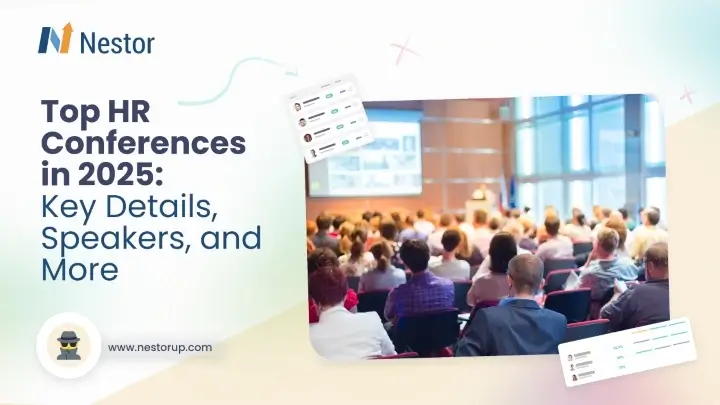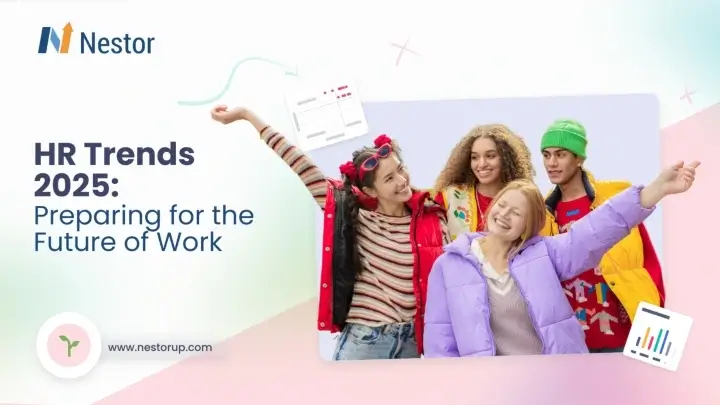Human Resources (HR) is undergoing a profound transformation, evolving from its traditional role of administrative tasks and support functions to becoming a key strategic player in organizational success. This transformation or shift also has a name: strategic HR.
It has emerged as an answer to the complexities of the digital age and the post-pandemic world, one which makes digitalization inevitable and asks HR departments to leverage the latest technological advancements to redefine their function and streamline their processes.
The digital age and data-driven economy are also pushing the rising need to embrace HR analytics tools to improve the decision-making process in all areas, especially talent management and organizational development.
So, let’s dive right in and explore the ins and outs of this new HR model and what it will look like when put into practice!
What is strategic HR?
Strategic HR or Strategic Human Resource Management (SHRM) is the process of aligning all aspects of HR — policies, processes, and initiatives — with the long-term objectives and sustainability of the organization.
The goal of the strategic HR model is multifaceted: on one hand, it seeks to align traditional HR responsibilities, like workforce planning, talent management, and development, with strategic targets.
On the other hand, it aims to expand the current role of HR teams, which are asked to get involved and help address a wider range of issues across business areas. These issues aren’t necessarily associated with the typical HR function and can involve the collaboration of multiple stakeholders, such as:
- developing effective hybrid/remote work policies and office arrangements, which maintain productivity and employee satisfaction rates
- designing and overseeing the implementation of programs nurturing general employee well-being and mental health
- creating policies on the use and risks of emerging technologies, such as generative AI
Part of what makes strategic HR innovative is its reliance on a different mindset, one in which HR functions are no longer separate from strategic business leadership and cross-departmental planning.
It is a combination of the current ownership or stewardship status of HR with the facilitator role, which will see HR professionals increase their participation in overcoming more complex business-wide issues.
What does strategic HR look like in practice?
What strategic HR actually involves will look different based on the specific needs of each company and the current status of their HR transformation process. However, several critical elements of this transition or new approach stand out:
High alignment with organizational needs
The first (and perhaps the most important) step in strategic HR management is for your HR team to fully understand the company’s goals and potential challenges. This is all about communicating with top leadership and expanding HR’s current business acumen. It’s about asking questions like:
- What are the short- and long-term business goals?
- How can we ensure short-term initiatives remain aligned with the larger vision?
- What have been some of the most pressing challenges up until now and what are some that we foresee in the future?
- How can we use scenario planning to be better prepared for navigating uncertainty?
- What are the business areas and departments we want to prioritize in our resource allocation plans?
Answering these questions together with key stakeholders will help HR grasp where their own strategies fit and how they can adjust them to contribute even further to business priorities. In practice, this can mean multiple things:
- Match talent with business strategy: Since talent is the most important resource nowadays, the acquisition and development of employees must be aligned with organizational needs. Skills-based approaches are an effective solution in that direction, which also enhances strategic workforce planning, and opens the door to dynamic career paths and an overall more resilient and agile workforce.
- Connect employees’ goals with the company’s vision: One of the first things to ensure people are aligned with the company’s vision and strategic direction is to foster a culture of transparency and high accountability. Modern performance management systems based on OKRs are the perfect tools to rally your people around a common vision and to show each employee how their work contributes to a higher purpose. Moreover, using these kind of tools, help you measure employee performance, identify the top performers and determine areas that need improvement.
Supporting leader, manager, and team effectiveness
Knowing the strategic goals of the company also enables HR departments to improve their support for leaders and their teams.
One key aspect is to ensure that employees have the right skill sets and also tools at their disposal to perform their tasks more efficiently. In regard to equipping the workforce with the right skills, in practice this should involve several actions:
- collaborating with each manager to identify and assess people’s skills to make informed decisions on hiring and promotion
- ensuring that projects and tasks are assigned based on the skills and experience level of each employee
- helping them select better-suited L&D programs and design personal development plans (for themselves or their teams)
- finding ways to enhance teamwork and create a team mentality, especially for remote workers
Another thing is providing more tailored leadership development programs, which either improve the skills of existing leaders or prepare future ones as part of the succession planning process.
Digitalize HR processes
Digitalization isn’t only a critical need and integral part of HR transformation, but also one of the foundation pillars of strategic HR.
As part of this new model, digitalization initiatives need to go beyond just streamlining HR processes and ensure that any new technologies and tools actually contribute to the overall objectives of the company.
For example, advanced HR analytics are becoming invaluable, since they speed up decision-making and improve it thanks to data-driven insights. This type of analytics will quickly identify areas where employees or processes are falling short, thus helping to take appropriate action faster.
As part of the shift to the strategic HR model, staying up-to-date will the latest technologies and their relevance will become one of the new responsibilities of HR teams. They’ll need to take a more proactive approach and assess the potential impact of innovations like generative AI early on, since they have the potential to radically impact business procedures and data privacy, among many others.
Ensure cost-effectiveness
Another aspect of strategic HR is finding new solutions to challenges like limited or frozen budgets for recruiting. When faced with such situations, HR teams will need to evaluate the return on investment (ROI) of different options and adjust their strategies accordingly.
One solution, for instance, would be to evaluate the feasibility of an internal mobility program and decide whether it is worth investing in developing a strategy in that direction.
Of course, there’s also the option of embracing quiet hiring, which, while stands out as a cost-effective response to the tight labor market, does come with its own challenges. Then, there’s L&D initiatives, which come with their own set of questions:
- How do we select training and development programs that lead to successful learning outcomes?
- What are the key metrics that we’ll use to define the success of an L&D program?
- How do we align individual employee aspirations with the needs of their team and the long-term goals of the company?
These are only some of the questions that HR needs to consider when adjusting their strategies, which represents a critical element of strategic HR.
Embrace a future-oriented approach
Last but not least, we cannot talk about strategic HR management without mentioning the shift to a coaching style of management.
Yes, this falls on the shoulders of managers, but in their new role as a facilitator, HR needs to collaborate with leaders across the entire organization and help them provide and receive feedback better so that they can continually improve the performance of their people.
This will work best when combined with a departure from the traditional way of doing performance management, which is past-oriented and limited by yearly reviews and inefficient communication.
By adopting a modern approach, in which performance evaluation becomes a continuous and development-oriented process, managers will be much better positioned to nurture the growth of their team members and HR will set up a dynamic and agile system, which is more adequate for the needs of modern business and employees.
Frequently Asked Questions (FAQ) about strategic HR
What is meant by strategic HR?
Strategic HR is an approach that sees HR departments take on more responsibilities related to the overall business strategy by focusing on aligning their policies and processes, as well as those of other departments, with the company’s strategic objectives.
What is the difference between strategic HR and traditional HR?
The traditional HR model was focused on administrative and ownership responsibilities, which saw HR specialists deal mostly with talent management (and everything it involves).
Strategic HR, on the other, brings more strategic responsibilities, in addition to existing ones, and sees HR take on a facilitator or “convene-and catalyze” role, as Gartner would put it. In this role, HR seeks to address a wider range of issues across various business areas, which aren’t necessarily associated with the typical HR function or involve the collaboration of multiple stakeholders.
What is the goal of strategic HR?
The goal of strategic HR is to ensure that all HR processes and policies, from the traditional talent management and development to the additional responsibilities of optimal digitalization and support for leadership effectiveness, are in alignment with and fully support the strategic objectives of the company’s stakeholders.
Final thoughts
Strategic HR represents a significant shift in the HR function itself, both in how it is perceived and its actual role within an organization, but it’s not entirely new for people in this field.
In fact, for many years now, HR strategists and leaders have argued that their teams were already capable, willing, and ready to make a greater contribution to change management, for example — something which has been proved and highlighted by their essential role during the pandemic.
And while both strategic HR and HR transformation represent new territory, it has become increasingly clear that as the importance of workforce and workforce-related issues increases, so will the role and prominence of HR departments, which are now ready to expand — something that both employees and employers will need to embrace to remain competitive and relevant in the future.









